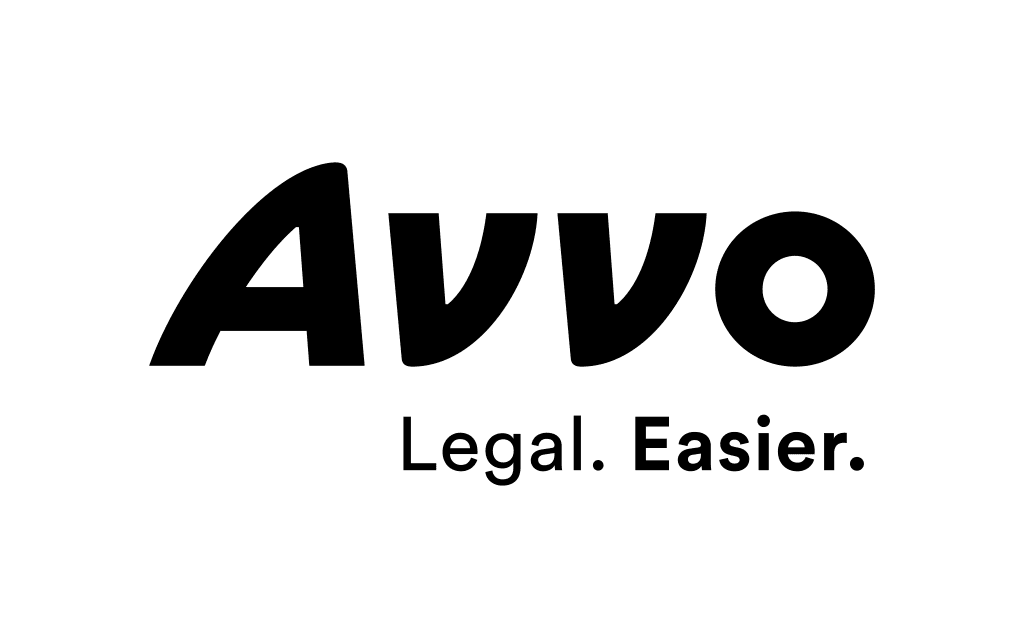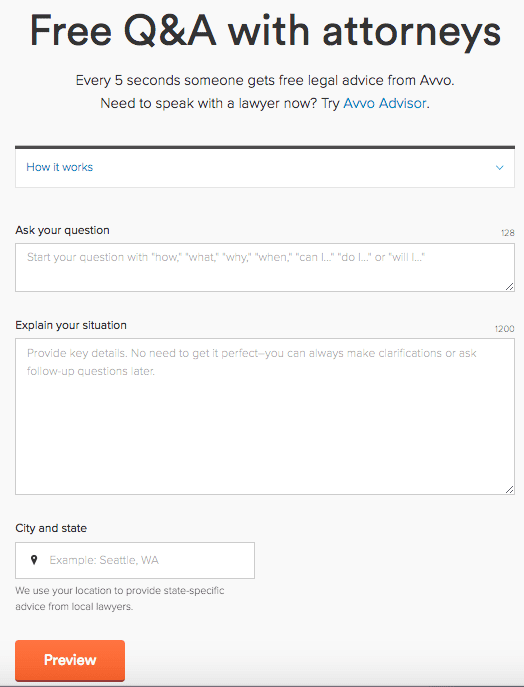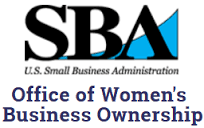Today, I’m going to show you 19 different marketing strategies that have a proven history of success for small businesses.
Half of these options will probably be viable growth strategies for your unique business.
Four of them are probably worth testing out over the next month.
And one of them has the potential to skyrocket your growth over the next year.
These work really well if you want to find inexpensive ways to promote your mobile app.
Once you’ve achieved product/market fit, your growth is simply a matter of smart marketing on the front end and a good customer retention on the backend. By the end of this article, you will know exactly what to do next with your marketing.
But before we get started, let me share a secret with you.
There Is No Magic Marketing Strategy
There is no magic bullet.
The goal of marketing is to connect your business’ value to the right customer base. It’s a simple concept but it can take on a million different shades.
- What demographics make up your customer base?
- Where do they live?
- Where do they hang out online?
- How do they look for products in your niche?
- Who do the listen when making decisions relative to your product?
The answers to these questions determine which marketing strategies will be viable and which will be a waste of time.
In other words, the key to success for your business is not Facebook Ads.
It’s not SEO.
It’s not conference networking.
There is no magic, universal strategy that will revolutionize your business. I have literally no clue what will work for you, because I don’t know you. I don’t know your business. I don’t know your customers.
But fortunately, you DO know your business! You DO know your customer base!
And after reading this guide, you will have an expanded awareness of viable marketing channels, any of which could hold the key to your future growth.
Eight of the channels we will discuss are strictly digital strategies, which will be conducted online. The other eight are a bit more general, with strategies that can be conducted offline (although many have online applications as well).
Let’s get started.
1. Facebook Advertising
Two million small to medium sized businesses advertise on Facebook; it’s an inexpensive and effective way to market to virtually any audience.
Image Credit: ibisinfotech.com
Facebook ads excel at advanced targeting. They allow you to target a specific audience based on location, interests, age, sex, online behavior, and many other factors.
Creating Facebook ads is very easy. You just need a solid headline, a bit of descriptive copy, one image, and a link.
Promote your app icon here as well.
The Facebook Ads Manager also makes it fairly simple to run and test multiple ad sets, allowing you to hone in on a winning formula and reach profitability without needing advanced technical expertise.
That said, many new users have a lot of difficulty succeeding with their initial campaigns. It takes some persistence, but on the plus side, Facebook’s popularity has produced numerous 3rd party tools that can help you succeed.
If you decide that Facebook is the right channel for you, I’d recommend using a tool like AdEspresso to run your campaigns and speed up your journey to positive ROI.
If you run a business that has a strong visual component, it might be worth trying out Instagram Ads instead. As a subsidiary of Facebook, Instagram Ads benefit from the same data base and targeting options, while allowing you to connect with an audience that is better primed for visual sales.
Additional Reading
- Facebook Advertising Made Simple: A Step-by-Step Guide by Neil Patel
- How to Run App Install Ads On Facebook by Aki Merced
2. Google My Business
Ranking your Google My Business (GMB) listing is one of the most powerful things you can do for your business.
In fact, if you run a local business targeting local clients, I would dare to say it is THE most powerful strategy available to you.
For example, if someone searches for a “Portland contractor”, this is what they see:
What you are seeing here is one paid ad, followed by THREE Google My Business listings before we even see the normal organic search results. If you can rank your GMB listing in these top 3, you can pull in large numbers of highly qualified leads day in and day out without needing to spend a dime on ads.
Google My Business combines all your different Google platforms into one central place, which includes your Google+ profile, Google Maps profile, your Google reviews, access to data on Google Analytics and Google Insights, and more.
If you have a unique brand name, you can even get a large display like this to show when people search for that name:
GMB immediately gives your business credibility and visibility, and as I said before, if you run a local business, it should be #1 on your priority list.
And best of all, ranking your GMB listing is really not that hard. It simply requires you to optimize your profile and then collect reviews and citations.
Additional Reading
- How to optimize your Google My Business listing: expert tips by Graham Charlton
- 7 SEO Mistakes That Leak Money From Local Businesses by Jacob McMillen
3. Google Adwords
There are more than 40,000 search queries on Google every second. No other advertising method has the potential to get your business before that many pairs of eyes.
Google Adwords is sort of the godfather of online marketing channels. It’s been around a long time. It’s competitive. It’s expensive. And if you know what you’re doing, it can work very, very well for you.
Despite being a paid channel, Adwords’ goal is still to deliver relevant search results to users, and as a result, it will be less expensive for you when you are utilizing proper on-page SEO.
Google assigns a quality score to your ad, which is dependent on CTR (Click Through Rate), relevance and the landing page your ad sends traffic to. This quality score factors into the bid rate you will need to get an ad displayed, with higher scores lowering the bid cost.
Unlike many of the channels we will discuss today, Adwords is a remarkably symbiotic channel that can be paired with many other strategies to maximize output. As a paid marketing channel, it also allows you to obtain immediate results and can scale as far as your budget allows.
Additional Reading
- The Complete Google AdWords Tutorial by Jerry Banfield
- The Iceberg Effect: How Your AdWords Strategy Is Slowly Drowning by Johnathan Dane
4. Content Marketing
18% of marketers say that content marketing has the greatest commercial impact on their business of any channel in 2016.
Image Credit: SmartInsights
Content marketing is the process of creating and distributing valuable, relevant, and consistent content to attract and retain a clearly-defined audience and drive profitable customer action.
Unlike paid advertising, content marketing focuses more on long-term results. The initial payoff tends to be low, but the long-term, sustainable growth in visitors, leads, and customers can single-handedly carry a business.
Content marketing is not easy, however, and requires every element to be done right:
- Quality content
- Relevant topics
- Optimized for SEO
- Optimized for readers
- Consistent content creation & promotion
Content is not limited to blog posts. It includes videos, podcasts, online courses, and a host of other mediums in which people consume information.
It’s important to understand that every small business can rely on content marketing. From food delivery apps to B2B consulting, professional services, white label apps, and more, content marketing is versatile for every possible use case.
If you are considering this strategy for your own business, make sure you have the time and capital needed to get going with no initial ROI, and then DO YOUR HOMEWORK. Too many businesses these days are just wasting resources creating mediocre content with no payoff, now or ever.
Additional Reading
- Getting Started With Content Marketing by Content Marketing Institute
- Why You Need a Growth Model For Your Blog (And How to Create One) by Devesh Khanal
- How to Start a Blog in 2020 (and Make Money): Free Easy Guide to Start Blogging Today
by Ryan Robinson
5. Organic Social Media
Using social media for business is really a non-negotiable.
67% of consumers use social media for customer support, and 33% prefer using social media instead of the telephone. If people can’t find your business via social media, they will look for your competitors who ARE present on preferred social channels.
The real question isn’t whether you should have active social media accounts, it’s how much time and resources you should be investing in growing your social audiences.
For some businesses, it makes sense to invest heavily in organic social media growth.
For example, Instagram users that follow fashion influencers are actively looking to purchase new styles. By building an active, fashion-savvy audience, a clothing retailer can build a consistent direct sales channel.
For other businesses, investing in Instagram might not make sense.
The key is identifying where your customers are and how they like to be approached. If social media is the answer to both those questions, it’s the perfect channel for your business.
Additional Reading
- 7 Step Beginner’s Guide To Effective Social Media for Small Business by Jamil Velji
- The Ultimate Guide To Creating The Perfect Social Media Calendar by Sandrine Sahakians
6. Coupon Deal Sites
Whether you sell a product or offer a service, you can use coupon deal sites like Groupon to quickly promote your business.
Coupon deal sites amass massive audiences, grouped by location, and then allow local, regional or even national businesses to offer limited-time discounts to their members.
Benefits include mass exposure, targeted local advertising, increased brand awareness, and an influx of new customers. The cost comes in the form of low revenue per sale. In the case of Groupon, you are required to discount your product by at least 50%, and at least half the revenue goes to Groupon.
In other words, unless you are running a 300% markup, you will lose money on your Groupon deal. It’s essentially paid advertising.
The primary purpose for using coupon deal sites is not sales. The more significant your discount, the more popular your deal will be. The goal is to get people in your door or trying your product, and from there, your customer retention strategies kick in.
As an added bonus, many new potential customers will browse your website even if they don’t decide to purchase the deal.
But be warned!
If your deal gains traction, you can quickly be overcome by more customers than you are prepared to handle, and if you don’t do the math correctly, you can lose a lot of money. It’s important to be ready and to have a plan for handling different tiers of new business.
It’s also important to have flawless customer service during the period after running your deal, with the expectation that your coupon-driven customers will be even harder to please than normal customers.
DO YOUR HOMEWORK. Follow deals going on in your area and see how they play out. If you can, talk with fellow business owners who have run deals and learn from their experience.
And make sure – for the love of all that is good and decent – make sure you do the math.
Additional Reading
- Doing The Math On A Groupon Deal by Jay Goltz
- The Real Cost of Groupon and What it Means to Your Marketing Planning by Mana Ionescu
7. Email Marketing
Email marketing is the cornerstone of digital marketing.
Most of the people who visit your site will not buy from you immediately. Capturing contact info for additional marketing and “lead nurturing” is the best way to sell in 2016, and email remains the highest converting channel for interacting with leads.
Email marketing funnels begin with a “lead magnet”. This is something compelling you offer your website visitors in exchange for their email address. Possible options include a free digital download, a free service trial, a “seat” at a webinar, site membership, a coupon, etc.
Here’s an example from HubSpot:
HubSpot offers a reliable and feature-packed email marketing tool that’s suited for growing businesses — for free. The tool allows you to create professional marketing emails that engage and grow your audience. You can start from scratch, with the easy drag-and-drop email builder, or use one of the goal-based templates available.
Other benefits of email marketing include:
- Low cost
- Global reach
- Easy to automate
- Easy to segment
- Immediate communication
- Easy to setup and run
- Easy to track and optimize
There are a lot of marketing channels that are hard. As you may have noticed from the above list, email marketing is one of the few that can be described as “easy”.
Additional Reading
- How to Build Your Email List: The (Better Than) Ultimate Guide by Aaron Orendorf
8. Webinars
A webinar is essentially a seminar that takes place online. It can be in the form of a presentation, demonstration or discussion.
Image Credit: boss.influxentrepreneur.info
Webinars are often used as lead magnets for email marketing and the right topic can drive a large batch of new subscribers to your list. It can also be used to build credibility with your current subscribers.
Webinars can also be recorded and used as standalone products or even a series of products. They are a great medium for both live and recorded training.
Webinars tend to be more engaging than simple videos, even if they are used in exactly the same way. The actual start time and live Q&A tends to make people feel like they are receiving significantly more value than if they were watching a video with the exact same information.
You will need webinar software to run a webinar that utilizes the following functions:
- 2-Way Audio – the presenter speaks while the viewers are muted, but the presenter can “turn on” individual viewers so everyone can hear their question
- Screenshare – the presenter can share their screen or switch to video for whiteboard teaching or live demonstration
- Polls – the presenter can invite viewers to take a poll or provide feedback in other ways
Webinars work very well in certain niches. You’ll have to test one out to see if it works with your target audience.
Additional Reading
- Webinar Marketing: 15 Steps to Revenue Generating Webinars by Georgiana Laudi
- How to grow your business with webinar marketing by Ross Beard
9. Promote A Free Consultation
When it comes to professional services, people want access to expertise.
If you have done a good job of positioning yourself as an expert or authority in your niche, promoting a free consultation is a great way to generate new leads. If you have a good interpersonal sales process in place, it also sets you up to close a large percentage of leads.
A lot of service providers worry about disclosing too much info in a free consultation. They feel like potential clients will just take the info and run.
In reality, the exact opposite is true. While freeloader types might grab and go, they were never going to buy anyway. The type of people interested in paying for quality will be impressed by the value you provide in the consultation.
After all, if you can provide so much value in 30 minutes to an hour, they will believe that your claims are true and that hiring you is the right decision.
This can be used both online and offline. It can be advertised via pamphlets, newspapers, signs, or even word-of-mouth. And it can be prominently displayed on your website and social media channels.
This strategy won’t be ideal for every businesses, but if you offer an expert service or a high-priced service, it is very much worth considering.
Additional Reading
- Should You Offer Free Consultations? by Courtney Johnston
- 6 Ways To Make Free Consults Work For You by Laura Simms
10. Offer Staff Incentives
Referrals are one of the best ways to find new customers, and who better suited to obtain referrals than your current staff?
Your employees know your product or service. They know your customer base. Some of them will take initiative without financial motivation, but most won’t, and those you bring in new business should be encourage to repeat the process with financial or otherwise meaningful reward.
Offer incentives to your staff members who refer new clients. Research proves that it doesn’t necessarily have to be monetary; incentives can even come in the form of:
- A sleep-in day: staff get to to sleep in late for a certain period of time.
- Membership to publications (of their choice).
- Vouchers for massages, movie nights, restaurants.
Like any type of compensation, incentives are about matching your business’ goals to the goals of your employees. If you can find out what they want most, you can motivate them to help grow your business.
It’s also important to give them the tools they need, whether that’s a customized landing page, printed coupons, a special discount for employee referred clients, or whatever.
Hold training sessions and teach your staff how to effectively promote your business, but remember that this form of marketing will only work if they genuinely feel good about your business and are properly motivated to pitch it to friends, family, and acquaintances.
Additional Reading
- How to Create a Referral Program that Boosts Retention & Rewards Employees by Joe Flores
- Determining The Most Effective Rewards For Employee Referrals by Dr. John Sullivan
11. Advertise In Niche Print Media
While much of the world has moved online, print media still exists, and in some niches, it still thrives.
In fact, as recently as 2014, retail consumers cited printed materials as the chief sources of information behind their purchasing decisions.
As print media continues to decrease in overall popularity, pricing for ad placement lowers as well. In the right niches, it is now possible to run effective ads at incredibly affordable prices.
That said, print media is rarely effective as a solo marketing strategy. It is best used in conjunction with online marketing strategies, with the two channels arranged to compliment each other and create an engaging experience for potential buyers.
Additional Reading
- How To Combine Print And Digital Marketing Campaigns by Jeff Bullas
- Is Print Marketing Really Dead? by Chris Holloway
12. Write A Column
If you are a decent writer, sharing your expertise in the form of weekly or monthly write-ups can do wonders for your brand.
This isn’t usually a situation where you get paid, but it’s also not a situation where you have to pay. These columns give you the opportunity to make consistent contact with an audience, building an actual relationship with the publication’s readers. That audience then begins to think of you when they think of experts in your field.
On the more accessible end, local newspapers or non-profit magazines are often looking for quality contributors. One the more exclusive end, publications like Forbes, Inc, and Fast Company are made up almost exclusively of unpaid expert columns.
But believe me. These experts make bank thanks to their place on these influential platforms.
Make sure that what you write about is valuable to the target audience. This isn’t lowkey advertising. It’s a chance to access and build trust with an audience someone else worked really hard to build.
Plus, even if you don’t land a column, you might be able to land a guest post, which can be incredibly valuable as well.
Some ideas for articles you can write include:
- How-to guides
- Current events commentary
- Interviews with interesting people
- List posts
- Reporting on trends or events
Additional Reading
- How to Secure Guest Posts on Big Publications (WSJ, Forbes & HuffPo) by Sujan Patel
- How I Wrote for Fast Company, Copyblogger,& Entrepreneur by Aaron Orendorff
13. Join Local Business Groups
Joining local business groups will give you the opportunity to meet up with other like-minded people who already share some common ground with you: owning a business. While a lot of more general entrepreneur groups exist, there might also be some niche-specific groups and meetups in your area.
These groups are a great opportunity to bounce ideas off other smart people, share referrals, find talent, and identify new opportunities.
They are also a major catalyst in expanding your network around the city in which you live. Connections tend to multiply, and if your group takes networking seriously, you can leverage your seemingly minor connections into much significant ones.
While these groups are typically best found online, it’s preferable to have in-person meetups for the bulk of your interactions.
Lastly, these groups can lead to joint ventures and profitable partnerships, which we will discuss more in the next section.
Additional Reading
- Top 10 Business Networking Groups You Should Join by Brian Morris
- How To Find A Mastermind Group by Pat Flynn
14. Partner With Other Businesses
Teamwork is always more effective than singular effort, and combining resources with another business can help you do things you could never accomplish on your own.
It’s typically best to target companies in your local area, even if your clientele isn’t local. Your goal is to work out a complementary arrangement that provides mutual benefit for both businesses.
Some joint venture examples include:
- A PPC agency could partner with a CRO agency to refer clients to each other.
- A coffee shop could offer free coffee vouchers to a plumbing company’s customers.
- A marketing company could partner with an accounting firm to recommend each other’s services during new client onboarding.
- A real estate agent app that features vendors for photography, staging, or cleaning companies.
- A beauty therapist could offer free manicures for a hair stylist’s clients.
There is really no limit to what’s possible. Simply identify crossover in your audience and a non-competitor’s audience and then find a way to tap into that crossover in a mutually beneficial way.
Additional Reading
- Why Small Businesses Should Partner Up With Other Brands by Web Smith
- 5 Tips To Partnering Alongside A Business For The First Time by Deborah Sweeney
15. Direct Mail Marketing
Like print media, direct mail marketing is not dead.
As online channels become more and more saturated with content, fewer companies look to direct mail, and that means opportunity for you.
Like with any marketing strategy, success comes down to targeted creativity. You can’t just spam people and expect a return on your investment. Just like you need to compel people to click your blog post headline, you need to compel mail recipients to open your letters.
Start with the envelope, which will never be opened if it looks like a run-of-the-mill promo piece. Stand out. Use a colored envelope. Use an unusual shape, size or material. Make it look interesting.
If possible, handwrite the address on every envelope or include something bulky inside to make the envelope lumpy – anything you can do to grab attention
Compare this envelope:
Image Credit: Freelogoservices
With this one. You’re more likely to open the following envelope, right?
Image Credit: KezzysCreations
The next thing to focus on is the content. If you want the best results, your headline has to be enticing, and your copywriting needs to hold the reader’s attention through the duration of your pitch.
Like most offline campaigns in 2016, direct mail is typically run in conjunction with an online marketing funnel.
Additional Reading
- How to Create a Direct Marketing Campaign by Entrepreneur.com
- How to Plan Your Direct Mail Marketing Campaign by George Oliveira
16. Speak At Events
In terms of branding and establishing yourself as an authority, few things are more impactful than being a speaker at popular events in your niche.
While invitations to speak at larger events are often extended as a result of accomplishments or visible influence, you can also work your way into these opportunities by becoming a talented speaker and delivering great talks at smaller events.
Or you can simply use it as another marketing channel, by speaking at some of these types of events:
- Local clubs – think Rotary, Lion’s, Chamber of Commerce.
- Business networking groups.
- Specific interest clubs (photography, hiking, sewing, etc.)
- Browse local events on Eventbrite.com and Meetup.com.
- Schools.
- Churches.
- Check events in your local newspaper and magazines.
- Big companies and their employees.
Be prepared, and treat every event like a big deal.
Additional Reading
- How To Start Speaking At Events by Chris Brogan
- Why I Get Invited to Speak at Events (And How You Can Too) by Rohit Bhargava
17. Small Business SEO
Small businesses are often tempted to give short shrift to SEO in their overall marketing, perhaps because mega-corporations such as Walmart and Amazon invest millions in dominating the search game. While it’s true that there will always be a competitor out there who has built a better small business SEO operation, it’s also true that today’s small business owner can’t afford to neglect search.
Here’s why:
- It works. A well-planned and executed SEO strategy will yield results in terms of increased organic traffic and better positioning.
- It’s cost effective. Compared to pay-per-click, social media marketing, and even purchasing email marketing lists, SEO delivers a respectable return on investment.
- It dominates market share. About 90 percent of consumers search a product or service online prior to making a purchase. They won’t find your business if it doesn’t show up in search.
- Mobile search is exploding. This year, Google announced that mobile search outpaced desktop search for the first time, and in fact, Google Search is the 4th most popular app in the United States.
Of course, if you operate a local business, you really can’t afford to ignore SEO in your marketing plan. Google’s latest algorithm favors local businesses in its search results in an effort to deliver the highly relevant and individualized results today’s consumers demand. This is especially true for consumers who use Google on their smartphones, tablets, and wearable devices.
If your business has a mobile app, give yourself kudos for being ahead of the curve for marketing and SEO. The exponential growth in mobile search is a huge boon for businesses who capitalize on the SEO advantages of a mobile app.
Your mobile app helps SEO in two distinct ways:
- Google is now treating as a “universal” result in mobile search. Apps with optimized titles and good ratings and reviews will float to the top, displacing even mobile websites with top organic rankings.
- Google considers “high quality” apps to be a positive factor in ranking mobile search results. This means that deep links between your app and website could improve your mobile search rank.
If your business markets to a highly mobile audience or relies on mobile search for traffic and leads, you might want to consider adding a mobile app to your marketing strategy.
18. Link-Building for Small Businesses
The Google algorithm factors the quality and quantity of sites that link to you in your search rankings. In fact, some SEO consultants even recommend that fledgling businesses actually buy links to boost their ranking. That tactic, however, may do more harm than good.
There is no question that high quality links build authority and credibility, ultimately improving your ranking, but changes in the Google Penguin algorithm actually penalizes sites containing too many low-quality or “spammy” links. The key is building links the old-fashioned way—by creating useful, relevant content that people want to share.
For SMEs, this means investing the money and resources to develop highly shareable, top quality content. Long-form blog posts and in-depth articles, infographics, and video tutorials are examples of high performing content likely to garner links.
19. On-Page Optimization
If keyword research is the foundation of your SEO strategy, on-page optimization undergirds the rest of the search infrastructure. On-page optimization includes everything from optimal keyword density to site load speed that helps Google evaluate and rank your page. Great keywords won’t deliver results without good on-page optimization. Here’s a look at the basics:
- Title Tags
Page titles should have an H1 tag (most content management systems do this automatically) and include a keyword and your brand name, if applicable. Limit your title to about 55 or 60 characters, which is all that displays in search results.
- Meta Descriptions
While metas aren’t technically factored into search, they do give the searcher more information, entice them to visit, and often serve as a call to action. Limit them to about 150 characters or so.
- Site Load Speed
Use Google’s Page Insight tool to see how your site stacks up. Aim for a score of 85 or better and make any recommended changes or fixes marked with a red exclamation point. If time and resources allow, make “yellow” fixes, as well.
- Schema Markups
Adding schema markups is one of the most powerful ways to boost your website in the SERPs. Schema tells the search engine what your content means, not just what it says, which changes the way the content is indexed. Google’s Structured Data Markup Helper makes it easy to add schema markups to your site.
- Keyword Density
While there is no “optimum” keyword density percentage, there are some best practices to follow, such as including keywords in the title, meta, and anchor text, and avoiding keyword stuffing on the page. Use natural language and aim to drop the keyword at least once in the first 100 words of copy on a page.
- Social Sharing Icons
Social media has a prime place in small business SEO; Google bots make a direct connection between your website and your social media profile pages. Include relevant social icons on your web pages—it not only improves your search, it adds credibility for visitors who land on your site.
Be sure to look at all your pages, including landing pages, product pages, and your company blog and implement SEO best practices across the board. Don’t forget ALT tags for images on your site; while the impact is small, the cumulative effect could make a difference in your rankings.
Conclusion & Summary
Well, that’s the scoop: 16 proven marketing strategies that have worked for thousands of businesses and can work for you.
Here’s the full list:
- Advertise on Facebook
- Rank your Google My Business listing
- Use Google Adwords
- Invest In content marketing
- Grow your organic social reach
- Run a coupon deal
- Build an email marketing funnel
- Host a webinar
- Offer a free consultation
- Incentivize employees to refer new clients
- Advertise in niche print media
- Write a column
- Join a local business group
- Partner with other businesses
- Launch a direct mail campaign
- Speak at events
- Small Business SEO
- Link Building
- On-Page Optimization
While only half of these are probably worth considering for your unique business, I’m guessing at least four of them are great fits, and as I said at the beginning of the article, one of these channels has the potential to skyrocket your growth this next year.
Evaluate the criteria I talked about at the beginning.
- What demographics make up your customer base?
- Where do they live?
- Where do they hang out online?
- How do they look for products in your niche?
- Who do the listen when making decisions relative to your product?
Use the answers to select four viable channels from today’s list of marketing strategies for small businesses, and then run small tests with each strategy to see what fails and what performs.


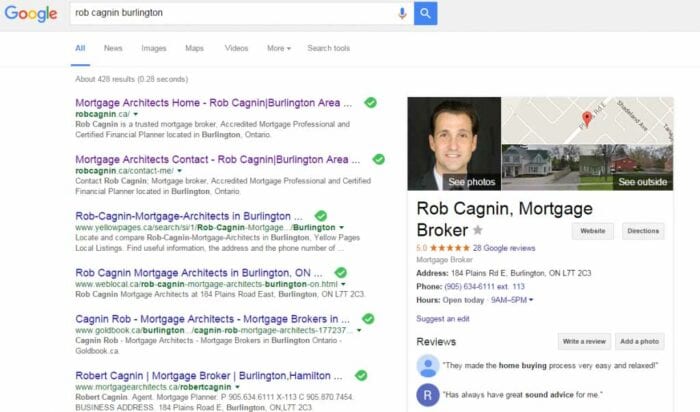



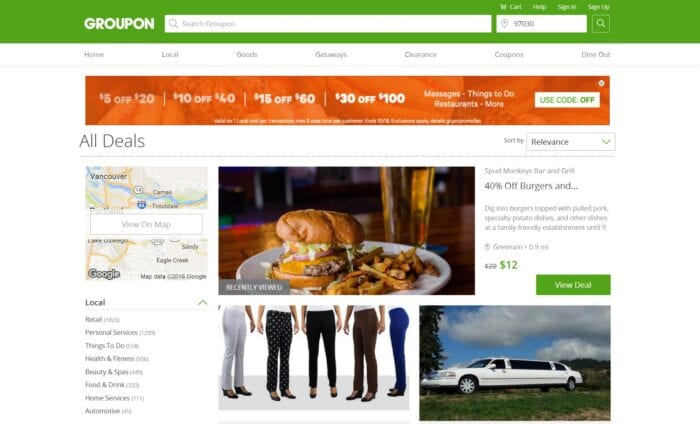
.png)








